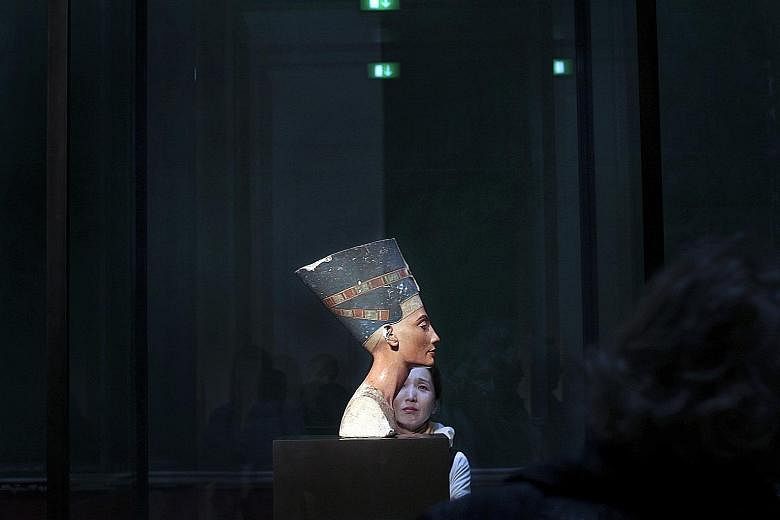BERLIN • Two German artists walked into the Neues Museum in central Berlin last October and used a mobile device to secretly scan the 48cm-tall bust of Queen Nefertiti, a limestone-and-stucco sculpture more than 3,000 years old that is one of Germany's most visited attractions. They used the data to create copies of the bust and delivered them to Egypt.
Then last December, in the tradition of Internet activism, they released the data to the world, allowing anyone to download the information for free and create their own copies with 3D printers.
On Thursday, the authorities of the German museum responded publicly for the first time. They were not amused.
Ms Birgit Joubstl, a spokesman for the Prussian Cultural Heritage Foundation, which oversees Germany's national museum system, cast doubt on the quality and authenticity of the scan, saying in an e-mail the museum had "noticed the 'artistic intervention' regarding the Nefertiti bust, but sees no necessity to react".
"Legal steps are not currently being undertaken as the scan seems to be of minor quality," she said, adding that "a detailed comparison with the museum's own 3D data has not yet been made".
The artists, Nora Al-Badri and Jan Nikolai Nelles, contended that their scanning data was accurate and several independent experts praised the quality of the data.
Mr Don Undeen, former senior manager of MediaLab at New York's Metropolitan Museum of Art, called it a "very good model" coming from consumer-level technology. "I'm glad to see the bust of Nefertiti join the ever- growing online collection of scanned art objects," he said.
The artists' project, The Other Nefertiti, confronts what they see as cultural theft and persisting colonialist notions of national ownership by making the object widely available. It is also a potent example of the way 3D scanning technology, which is becoming cheaper and more accessible, presents cultural institutions with new opportunities, as well as new challenges.
"The Nefertiti stands for millions of stolen and dead objects, which are buried in museums," Nelles said.
The Nefertiti bust, added Badri, a German of Iraqi descent, "is special because it is not only an ancient artefact, but also a media icon with its own social power".
The bust is considered the jewel of Germany's state museum antiquities collection. The artists argue that the Neues Museum presents the artefact without sufficient explanation of how it was obtained or of its contentious status.
The original bust, a well- preserved depiction of the wife of Egyptian Pharaoh Akhenaten, was removed from Egypt shortly after its discovery in Amarna, in what is now Minya province, by German archaeologists in 1912. The Egyptian authorities say the artefact was taken illegally and have repeatedly called for its repatriation.
Ms Joubstl of the German museum said "the Egyptian state has never filed a restitution claim".
Last October, Badri concealed the scanning device - a modified version of the Kinect, a motion sensor developed by Microsoft for the Xbox 360 that can be bought for about US$100 (S$139) - underneath a scarf, circling and scanning the artefact whenever the guards would congregate to chat with one another, while Nelles filmed.
They then handed the data over to be assembled by hackers. Two months later, they leaked the resulting 3D data set to the public under a Creative Commons licence at Europe's largest hacker conference, the Chaos Communication Congress, in Hamburg, Germany.
Within 24 hours, at least 1,000 people had downloaded the torrent.
Badri and Nelles took their copies to Egypt on a trip funded by the Goethe-Institut. They buried the first copy, made of polymer resin, in the desert. They then filmed a staged discovery of the second, made of gypsum and painted to look like the original, and donated it to the American University in Cairo.
NEW YORK TIMES

